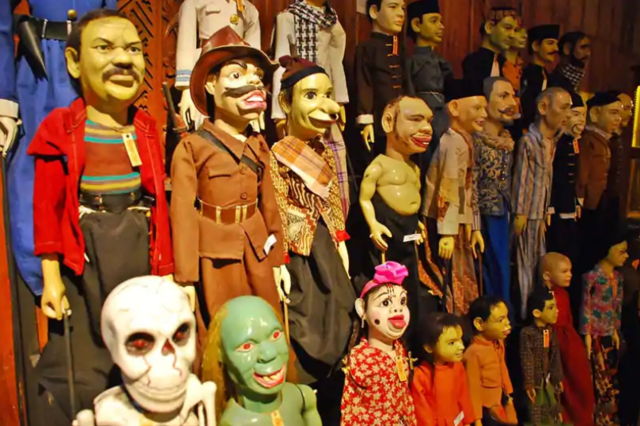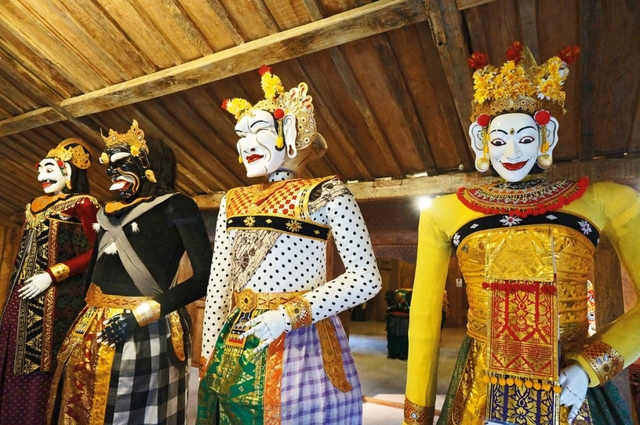
The Mask and Puppet House was founded by Hadi Sunyoto, a businessman and cultural enthusiast who collected masks and puppets from various regions of Indonesia. As a result of his efforts, the museum was built near Ubud in 2006.
The collection of the Mask and Puppet House consists of approximately 7,000 exhibits, including 1,300 masks from Indonesia, Africa, and Japan, and 5,700 puppets from Indonesia, China, Malaysia, Thailand, Myanmar, and Cambodia.
The majority of the exhibits are Indonesian. The museum actively continues to collect masks and puppets, acquiring them through purchases or as donations from visitors, collectors, and foreign artists.
The collection is housed in several traditional antique Javanese houses known as joglo. These wooden carved houses made of teak were characteristic of East and Central Java in the past and are themselves independent exhibits of the collection, representing Indonesian architecture.
The first building houses the collection of traditional wayang puppet dolls. Here, you can find both traditional and contemporary figures, such as those depicting the curator of the collection, Agustinus Praitno, and even former U.S. President Barack Obama. The Obama puppet was created during the 2008 U.S. presidential elections.

The walls of this joglo are adorned with depictions from the Hindu epics Ramayana and Mahabharata, Sicilian marionettes dating back to the 16th century, and Japanese Bunraku dolls from the 18th century.
The second building showcases leather shadow puppet dolls made from cowhide. These puppets are known as wayang kulit, and they can be seen in Bali during temple anniversaries or Balinese ceremonial events. Performances of such shadow puppet theater are conducted by a special puppeteer called a dalang, who sits behind a white screen illuminated by an oil lamp.
In ancient times, wayang kulit performances served educational and entertainment purposes. The characters drew inspiration from Hindu epics, imparting the wisdom of these works and offering lessons in good behavior. Instructive stories were interspersed with comedic and anecdotal ones, preventing the audience from falling asleep during the performances. Wayang kulit shows could often last for several hours and conclude late into the night.
The collection in the third building consists of traditional and sacred masks, while the fourth building features more contemporary specimens gathered from local village craftsmen.

The fifth building is dedicated to Balinese puppets and masks, including intricately carved masks and full costumes of Barong and Rangda. These two mythical characters are central figures in Balinese legends.

The exhibits are accompanied by detailed descriptions of the characters they represent.
During your stroll, you can take a break in the museum's garden or refresh yourself at its café.
The House of Masks and Puppets is situated on an area of over one hectare. In addition to pavilions, there is an outdoor amphitheater, a field, and a tropical garden.
The House of Masks and Puppets provides space for performances, training sessions, and filming.
You can add one right now!